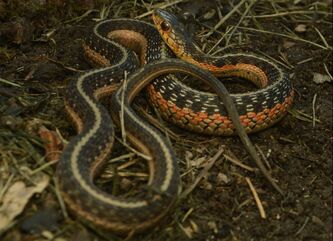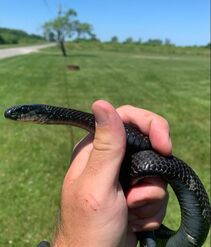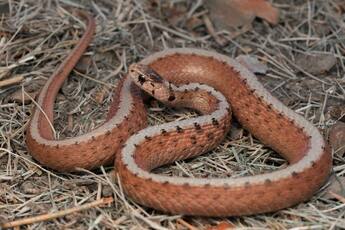While we love the Lake Erie Watersnake and know that they are the foundation to our project, we also recognize the other species of snakes that can be found on our Lake Erie islands! All snakes should be respected and allowed to inhabit the ecosystem that they belong to.
Fun fact! We do not have any venomous snakes on the Lake Erie islands. This is a unique environment that allows us to be safe in any place we are looking for snakes. This is not the case everywhere however, and it is important to be safe and check into the venomous snakes that may be in the area. If you encounter a venomous snake you can reach out to local wildlife officers or rehabilitation centers to help.
ALL snakes regardless of species deserve our respect!
Fun fact! We do not have any venomous snakes on the Lake Erie islands. This is a unique environment that allows us to be safe in any place we are looking for snakes. This is not the case everywhere however, and it is important to be safe and check into the venomous snakes that may be in the area. If you encounter a venomous snake you can reach out to local wildlife officers or rehabilitation centers to help.
ALL snakes regardless of species deserve our respect!
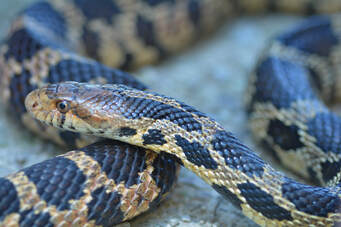
Eastern Fox Snake (Pantherophis Vulpinus)
With its beautiful copper colored head and tendency to rattle its tail when threatened, this snake is often mistaken as a venomous snake. These large snakes are known to be quite docile and are members of the same genus as rat snakes. This means they are great pest control and love to eat rodents and birds. You wont need to put out mice traps with one of these around!
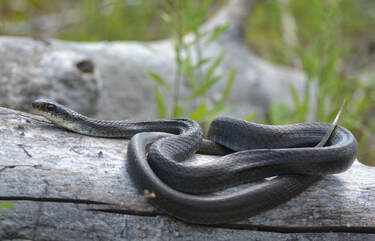
Blue Racer (Coluber Constrictor Foxii)
Named based on how quickly they are able to move, blue racers also rattle their tail when threatened to try and scare off predators. They also may lift the front portion of their body in the air to look tough. The blue coloration can best be seen in the sunlight. Another one of the larger snakes found on the islands, they will actually feed on smaller snakes that they may catch.
|
Dekay's Brown Snake (Storeria Dekayi) Depending on what island you are on, this may be a common snake to find. They can best be identified by their brown coloration and the two black markings that look like tears from their eyes. The brown color can range from a true brown to a greyish coloration and even a pinkish coloration. These are small snakes with adults only reaching to about a foot long at maximum. They eat soft bodied invertebrates such as slugs and worms. |
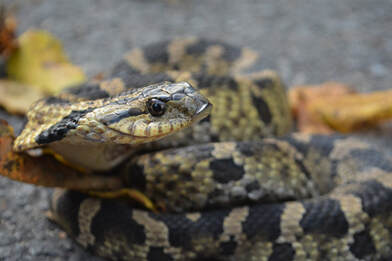
Eastern Hognose Snake (Heterodon Platirhinos)
A rare snake to find on the islands, these are often a favorite among snake lovers. When they are threatened they will "play dead" by going limp, flipping themselved belly up and opening their mouths. They are even able to burst blood vessels in their mouths to convince the predator. These snakes are also able to flatten their neck out and hiss to act like a venomous cobra. As such a master of theatrics it is easy to see why they are beloved. Hognoses get their name and can be identified based on their snout which is distinctly angled up like a pig.
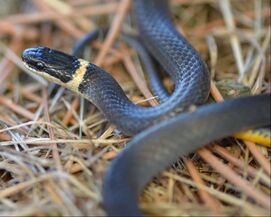
Ringneck Snake (Diadophis Punctatus)
Named based on the light colored ring of scales around their neck, these snakes are not frequently seen because of their secretive native and the time they spend under rocks and logs. Another one of the small snakes on the islands, they will also not typically grow to lengths more than a foot. Their time spent under objects is to help them find food such as smaller snakes and salamanders.
All other snake photos thanks to volunteer Tyler McClain
